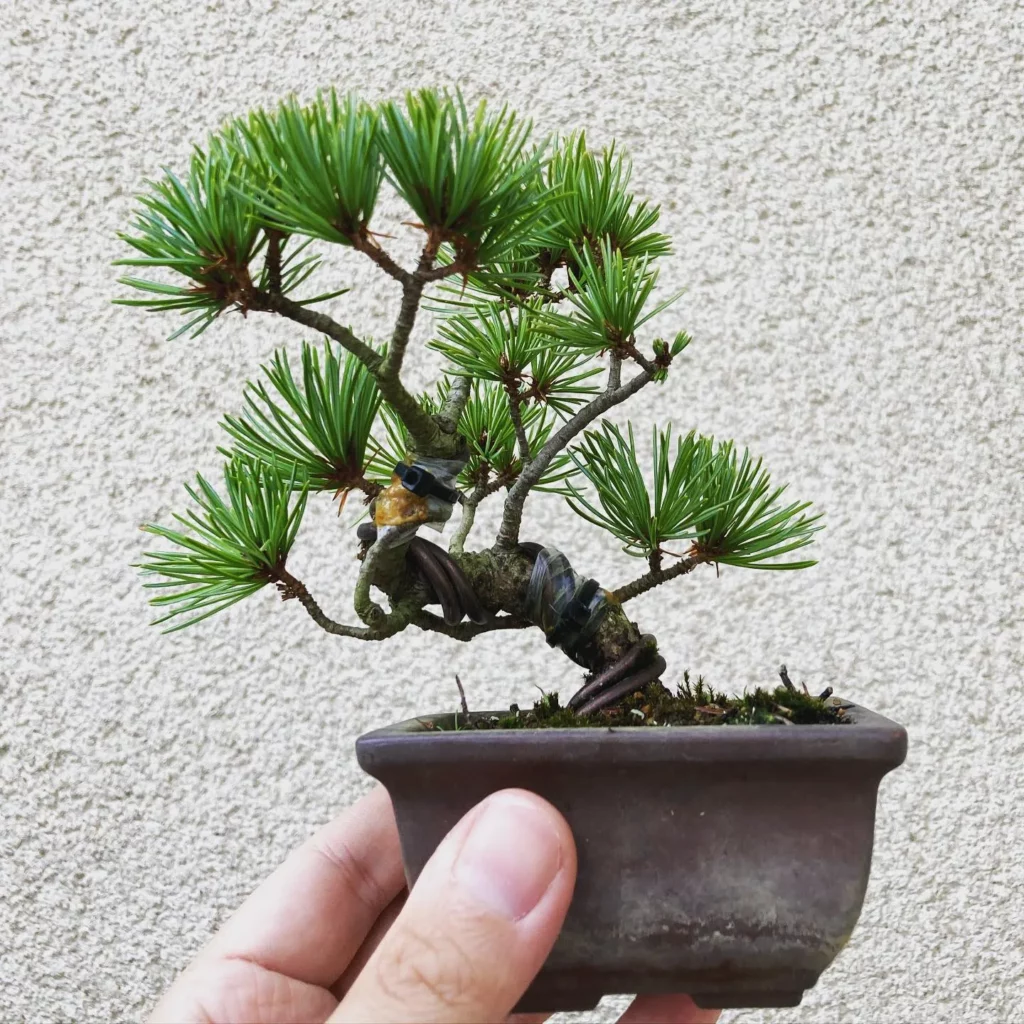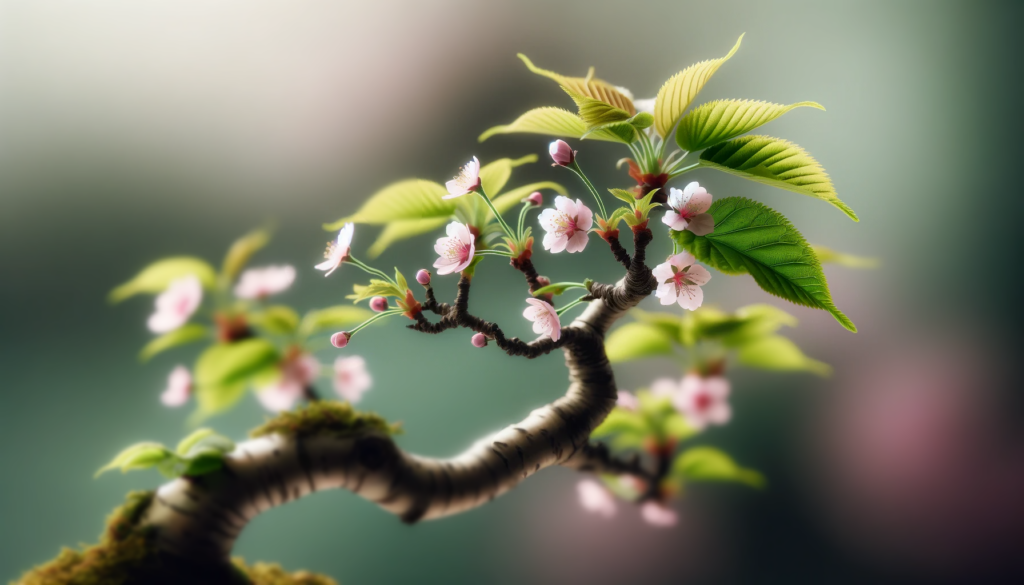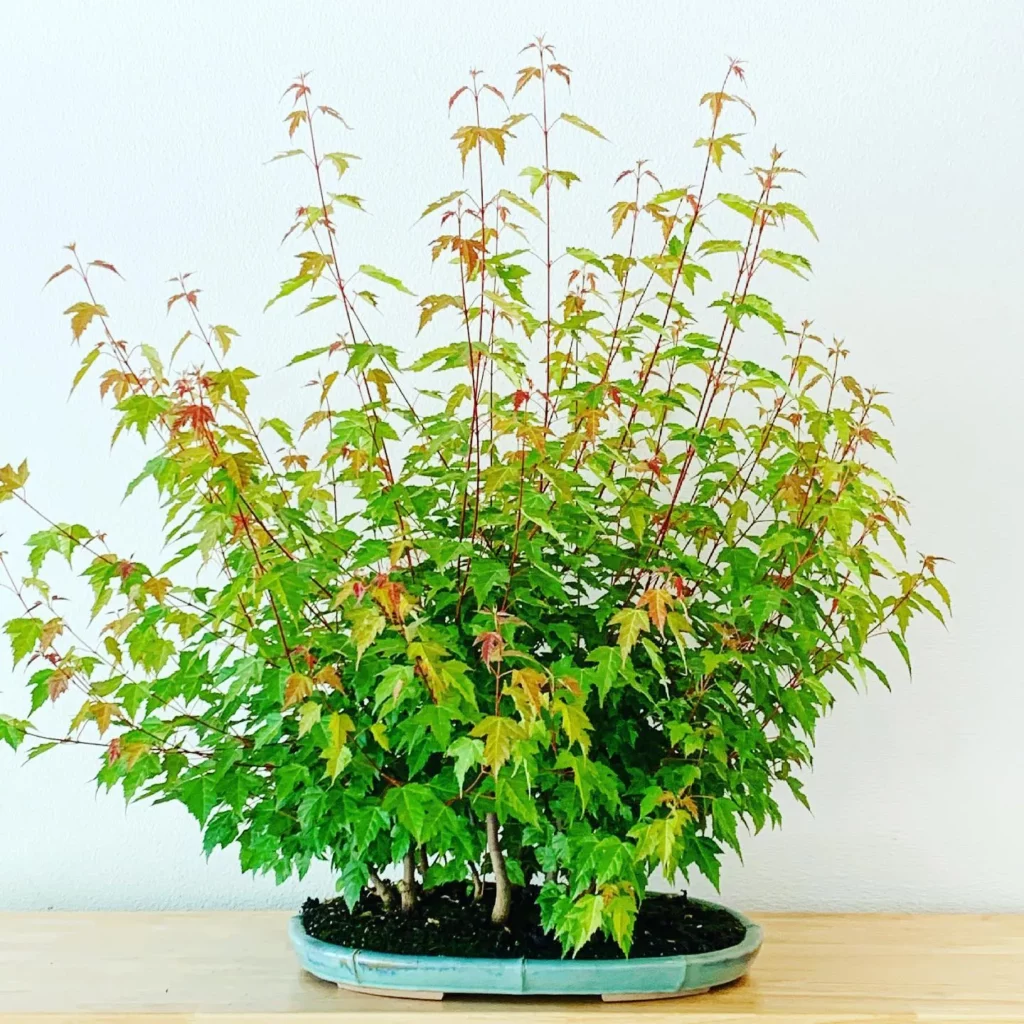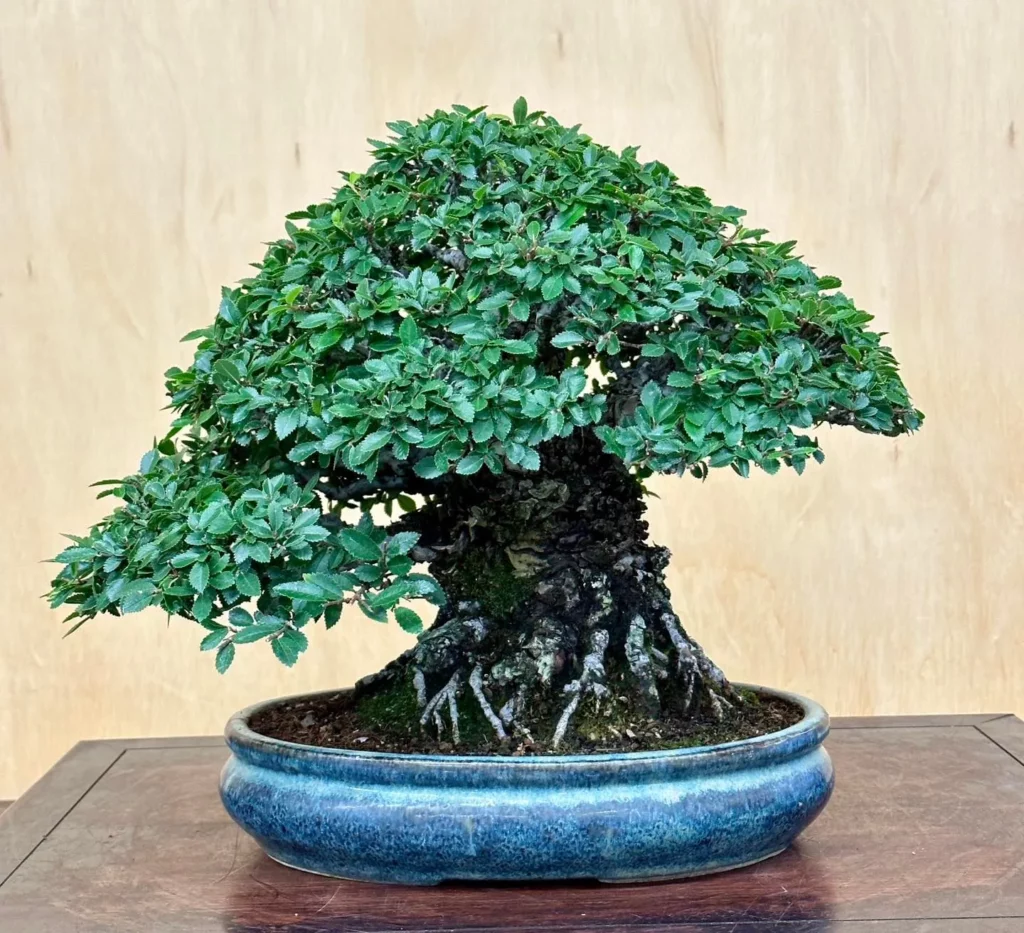Welcome to the enchanting world of Yamadori Bonsai, where wild trees become living masterpieces. Yamadori Bonsai involves the art of collecting trees from their natural habitats and transforming them into unique works of art. These trees, shaped by the forces of nature, carry a distinct beauty that cannot be replicated.
When exploring the world of Yamadori Bonsai, you will discover the serene beauty of wild trees. Each Yamadori tree has its own story, shaped by years of exposure to wind, snow, and drought. Their branch shapes and textured bark tell a tale of resilience, making them true living masterpieces.
However, it’s important to understand that collecting trees from forests requires proper permissions to ensure ethical and responsible practices. Always seek permission from the landowner before digging out any plant, as it may be illegal to do so without consent.
Join us as we delve deeper into the art of Yamadori Bonsai, exploring the step-by-step process of collecting and caring for these wild trees. Discover the locations where Yamadori can be found, the unique beauty they bring to any Bonsai collection, and the challenges and rewards of nurturing these natural wonders. Let us embark on a journey to appreciate nature’s creative legacy and bring the untamed beauty of Yamadori into our homes and gardens.
Step-by-Step Guide to Collecting Yamadori Trees

When it comes to collecting Yamadori trees, following a step-by-step process is crucial. By taking the necessary precautions and employing careful techniques, you can ensure the successful acquisition and safe transport of these magnificent specimens.
1. Digging out the Trees
To begin the collection process, use a spade to carefully dig around the tree, ensuring that you avoid damaging the delicate root system. By taking your time and exercising caution, you can preserve the tree’s health and vitality.
2. Preventing Drying Out
Once the tree is lifted from its natural setting, it is vital to prevent it from drying out during transportation. Wrap the tree in moist sheets or burlap to maintain its moisture levels and protect it from desiccation.
3. Potting the Tree
As soon as possible, transfer the tree to a suitable pot using the original soil mixture collected from the digging site. This will provide the tree with the necessary stability and nutrients to continue thriving in its new environment.
4. Best Time for Yamadori Collection
The ideal time to dig out Bonsai trees, including Yamadori, is during the early spring, before the tree starts its active growth phase. This timing allows the tree to recover and establish itself in its new container more effectively.
No products found.
Understanding the Unique Beauty of Yamadori Bonsai
Yamadori Bonsai trees possess an extraordinary and distinct beauty, setting them apart from other Bonsai trees. Shaped by nature’s forces over many years, these trees showcase remarkable branch formations that cannot be replicated. Each Yamadori tree possesses its own individuality, contributing vibrancy to any Bonsai collection. Their exceptional appearance serves as a testament to nature’s artistry and the extraordinary power of natural sculpting processes.
Discovering the Charm of Yamadori Trees
Yamadori trees offer a unique charm that can bring a touch of wilderness to your Bonsai collection. These trees can be found in various breathtaking locations, making the search for them an exciting adventure. From windswept cliffs by the sea to serene riverbanks and rugged mountains, the diversity of Yamadori tree habitats is truly remarkable.
When it comes to choosing the right tree for your Yamadori practice, there are certain common species that are favored for their resilience and aesthetic appeal. These include Junipers, Pines, Oaks, and Maples, among others. These species have proven to thrive in Bonsai cultivation and offer unique characteristics that make them ideal choices for creating stunning Yamadori Bonsai trees.
However, it is essential to ensure ethical practices when collecting Yamadori trees. Respecting the environment and obtaining proper permissions before removing any tree from its natural habitat is of utmost importance. This ensures that the delicate ecological balance is maintained and allows for the sustainable cultivation of Yamadori Bonsai trees.
Locations to Find Yamadori Trees:
- Coastal areas with wind-swept cliffs and rocky terrain.
- Mountainous regions with rugged landscapes and high elevations.
- Forests with dense vegetation and diverse tree species.
- Riverbanks and water bodies, where trees thrive in moist environments.
Initial and Ongoing Care for Yamadori Bonsai

After collecting a Yamadori tree, you must provide it with proper care to ensure its health and beauty. Here are some essential steps to follow:
Selecting a Suitable Training Pot
Choose a training pot that allows for proper root development and growth. The pot should be slightly larger than the tree’s existing root system, allowing room for expansion. Ensure the pot has drainage holes to prevent waterlogging.
Choosing the Right Soil Mix
The soil mix for your Yamadori Bonsai should have good drainage to avoid waterlogging while retaining enough moisture for the tree’s roots. A mix of Akadama, pumice, and lava rock is commonly used, but you can also explore other suitable options depending on your tree’s specific needs.
No products found.
Stabilizing the Tree Initially
After planting the Yamadori tree in its training pot, make sure it is securely positioned and stable. Use bonsai wire or stakes if necessary to support the tree and prevent it from toppling over.
Long-term Care
Caring for your Yamadori Bonsai involves several ongoing tasks:
- Regular Watering: Monitor the moisture level of the soil and water the tree when it starts to dry out, avoiding both overwatering and underwatering.
- Fertilizing: Provide your Yamadori with balanced bonsai fertilizer to support healthy growth and replenish nutrients during the growing season.
- Root System Checks: Regularly inspect the root system to ensure it remains healthy and free from any issues like root rot or pests.
- Pruning: Trim and shape your Yamadori Bonsai to maintain its desired form and encourage new growth. Prune during the appropriate seasons to avoid stressing the tree.
- Occasional Repotting: As your tree grows, it may require repotting to refresh the soil and promote proper root development. Repotting frequency depends on the species and growth rate of your Yamadori.
The Significance of Yamadori in Bonsai Art

Yamadori trees hold immense significance in the world of Bonsai art and aesthetics. These naturally sculpted trees have captured the admiration of art enthusiasts for centuries, especially within the realm of traditional Japanese art. The practice of collecting and cultivating Yamadori reflects a deep respect for nature and an appreciation of its inherent ability to create beauty.
Yamadori trees serve as a beautiful bridge between human artistic expression and the extraordinary creativity found in nature itself. By incorporating Yamadori trees into our homes and gardens, we are able to bring forth a sense of untamed beauty and tranquility.
The cultural heritage of Yamadori in Japanese art is rooted in the belief that the natural world holds profound wisdom and inspiration. These trees, shaped by the forces of wind, snow, and time, embody the essence of nature’s artistry. Their unique and organic forms reflect the rich aesthetics and sensibilities of Japanese culture.
The Essence of Cultural Heritage
- Yamadori trees have been cherished and embraced within traditional Japanese art for generations.
- As living sculptures, they evoke a sense of harmony and balance, representing the interconnectedness between humanity and the natural world.
- These trees symbolize the preservation of culture and hold historical significance as a link to the past.
The Aesthetics of Yamadori Bonsai
The aesthetic value of Yamadori Bonsai lies in their ability to capture the raw beauty of untamed nature. The irregular branch shapes, intricate textures, and unique growth patterns of these trees create captivating visual compositions. Each Yamadori tree possesses its own story, expressed through its individuality and distinctive character, making it a genuine work of art.
- Yamadori Bonsai exemplifies the Japanese concept of “wabi-sabi,” which celebrates the beauty of imperfection and transience.
- These trees reflect the profound connection between humans and nature, promoting a sense of tranquility and mindfulness.
- Through Yamadori Bonsai, we can cultivate a deep appreciation for the beauty that is found in the simplicity and authenticity of the natural world.
Yamadori brings forth not only the physical representation of nature’s elegance but also the spiritual and emotional connection with the natural world. The profound cultural heritage and aesthetic beauty of Yamadori trees make them a cherished and prized component of Bonsai art that captivates the hearts and minds of enthusiasts worldwide.
The Uniqueness and Individuality of Yamadori Trees

Yamadori trees are nature’s masterpieces, each one unique and one-of-a-kind. Shaped by years of exposure to wind, snow, and drought, these trees possess a charm and beauty that cannot be replicated.
What sets Yamadori trees apart is their individuality. Each tree has its own distinct shape, texture, and growth pattern. This individuality adds vibrancy and aesthetic value to any Bonsai collection, making it a one-of-a-kind addition to your home or garden.
It’s fascinating to witness the unique personality of each Yamadori tree. From the way its branches twist and turn to the delicate patterns in its bark, these trees have an undeniable allure. A Yamadori tree’s distinct features enhance its overall appeal, creating a captivating visual experience.
Why Yamadori trees are nature’s masterpieces
Yamadori trees are true works of art crafted by nature itself. Over years of exposure to the elements, they have been shaped into living sculptures that are a testament to nature’s creativity and resilience. Each tree tells a story of its journey, as it carries the marks and scars of its past.
Adding aesthetic value to your Bonsai collection
When you introduce a Yamadori tree to your Bonsai collection, you are adding a touch of uniqueness and individuality. These trees stand out among others, giving your collection a diverse and fascinating character. The aesthetic appeal they bring is unparalleled, making them a valuable addition to any Bonsai enthusiast’s repertoire.
- Each Yamadori tree is a living masterpiece shaped by nature’s forces.
- Their individuality adds vibrancy and aesthetic value to your Bonsai collection.
- Yamadori trees tell a story through their unique shape, texture, and growth pattern.
- Introducing a Yamadori tree enriches your Bonsai collection with its one-of-a-kind charm.
Challenges and Rewards of Yamadori Collecting
Collecting Yamadori trees comes with its own set of challenges and rewards. The process of finding and collecting these trees requires patience, proper technique, and respect for the environment.
One of the major challenges in Yamadori collecting is the search for suitable trees. It involves exploring various landscapes, from rugged mountains to serene riverbanks, in the hopes of discovering a potential Bonsai tree. This pursuit demands perseverance and a keen eye for unique specimens.
Once a tree is found, the process of extracting it from its natural habitat poses another challenge. Careful digging, using the right tools and techniques, is crucial to avoid damaging the tree’s delicate root system. Transporting the tree safely and preventing it from drying out requires extra precautions.
Despite these challenges, the rewards of Yamadori collecting are plentiful. The thrill of stumbling upon a beautiful tree in the wild, with its unique charm and character, is truly exhilarating. Witnessing the transformation of a wild tree into a living masterpiece brings immense joy and satisfaction.
Yamadori collecting also fosters a deeper connection with nature. It allows you to immerse yourself in the natural environment, forging a bond with the trees and the landscapes they inhabit. This connection provides solace and a sense of fulfillment, reminding us of the intricate beauty and resilience of the natural world.
Moreover, nurturing a Yamadori tree and seeing it thrive under your care is immensely rewarding. It teaches valuable lessons in patience, dedication, and respect for life. As you witness the tree’s growth and transformation, you become a custodian of nature’s artistry, preserving its legacy for generations to come.
Challenges of Yamadori Collecting:
- Finding suitable trees in diverse landscapes
- Extracting trees without damaging their delicate root systems
- Transporting trees safely to prevent drying out
Rewards of Yamadori Collecting:
- The thrill of discovering unique and beautiful trees in the wild
- Seeing the transformation of a wild tree into a living masterpiece
- A deeper connection with nature and the environment
- Learning valuable lessons in patience, dedication, and respect for life
Preserving the Art of Yamadori Bonsai
The art of Yamadori Bonsai holds a deep connection with nature and showcases the beauty of wild trees shaped by time and natural forces. To ensure the longevity of this unique art form, it is imperative to embrace responsible practices and ethical approaches. By prioritizing the well-being of the tree and respecting our natural environment, we can preserve the art of Yamadori Bonsai for generations to come.
1. Prioritizing Ethics
Central to the preservation of Yamadori Bonsai is a strong commitment to ethics. This involves respecting the rights of landowners and obtaining proper permissions before collecting any trees from their natural habitats. By adhering to ethical principles, we can protect the delicate ecosystems that wild trees inhabit, contributing to the sustainability of our natural resources and promoting a harmonious relationship with the environment.
2. Embracing Responsible Practices
Responsible practices are essential in preserving the art of Yamadori Bonsai. When collecting trees, it is crucial to employ proper techniques that minimize harm to the tree and its natural surroundings. This includes carefully digging around the root system to ensure its integrity and using moisture-retaining materials to prevent dehydration during transportation. By following these responsible practices, we can ensure the survival and vigor of collected trees.
3. Promoting Appreciation for Nature
Preserving the art of Yamadori Bonsai goes beyond responsible practices and ethics alone. It also involves fostering a deeper appreciation for the beauty and wonders of nature. By sharing knowledge and raising awareness about Yamadori Bonsai, we can inspire others to develop a stronger connection with the natural world. Through this appreciation, we can cultivate a sense of responsibility towards the environment and encourage sustainable practices that benefit both the art form and the planet.
- By prioritizing ethics, responsible practices, and appreciation for nature, we can ensure the preservation of Yamadori Bonsai, allowing future generations to experience the beauty and tranquility of these living sculptures.
- Together, let us uphold the principles that honor the trees, the environment, and the artistic potential that Yamadori Bonsai represents.
- By preserving this art form, we celebrate the inherent creativity of nature and the profound connection between humankind and the natural world.
The Beauty and Legacy of Yamadori Bonsai
Yamadori Bonsai trees showcase nature’s legacy and the remarkable power of artistic expression. These trees bear the marks of time and the forces of nature, embodying the untamed beauty found in the wild. When cultivated as Bonsai, each tree becomes an exquisite living sculpture that brings the essence of the natural world into our homes and gardens.
What sets Yamadori Bonsai apart is the uniqueness of each tree. Shaped by the elements and the passage of time, every tree carries its own story and exceptional beauty. No two trees are alike, providing a glimpse into nature’s boundless creativity. Connecting with Yamadori Bonsai allows us to foster a deeper appreciation of the diverse forms that artistic expression can take.
Beyond their aesthetic value, Yamadori Bonsai trees offer a profound connection to nature. By nurturing and caring for these living sculptures, we forge a personal bond with the natural world. Embracing Yamadori in the practice of Bonsai enables us to immerse ourselves in the rewards of tending to these unique trees and witnessing their growth and transformation, a testament to the inherent beauty of nature herself.
After this check out our other articles on:
FAQ
What is Yamadori Bonsai?
Yamadori Bonsai involves collecting wild trees from their natural habitats and transforming them into living masterpieces.
Is it legal to dig out trees for Yamadori Bonsai?
It is important to obtain proper permissions before collecting trees from forests, as it may be illegal to dig out plants without permission from the landowner.
What is the process of collecting Yamadori trees?
The process involves carefully digging around the tree with a spade, wrapping the tree in moist sheets to prevent drying out, and potting it as soon as possible with the original soil mixture.
When is the best time to dig out Yamadori trees?
The best time to dig out Bonsai trees, including Yamadori, is during the early spring before the tree starts growing.
What makes Yamadori trees unique?
Yamadori trees have been shaped by nature’s forces over many years, resulting in distinctive and dramatic branch shapes that cannot be replicated.
Where can Yamadori trees be found?
Yamadori trees can be found in a variety of environments, from windswept cliffs by the sea to serene riverbanks and rugged mountains.
How should Yamadori trees be cared for?
Yamadori trees require regular watering, fertilizing, root system checks, pruning, and occasional repotting based on their unique characteristics.
What is the significance of Yamadori in Bonsai art?
Yamadori collecting is rooted in respect for nature and appreciation of its capacity to create beauty, serving as a bridge between human artistic expression and nature’s inherent creativity.
Why are Yamadori trees considered one-of-a-kind?
Each Yamadori tree has its own shape, texture, and growth pattern, making it a unique masterpiece shaped by years of exposure to nature’s elements.
What are the challenges and rewards of collecting Yamadori trees?
Finding and collecting Yamadori trees requires patience, proper technique, and respect for the environment, but the rewards include the thrill of discovery and the joy of nurturing a potential Bonsai in the wild.
How can the art of Yamadori be preserved?
It is crucial to prioritize the well-being of the tree over personal desires and practice ethical collecting methods, setting a good example and raising awareness about the importance of responsible Yamadori collecting.
What makes Yamadori Bonsai beautiful and significant?
Yamadori Bonsai trees capture the essence of the wild and bring nature’s legacy into our homes and gardens, offering a glimpse into nature’s creativity and the power of artistic expression.




